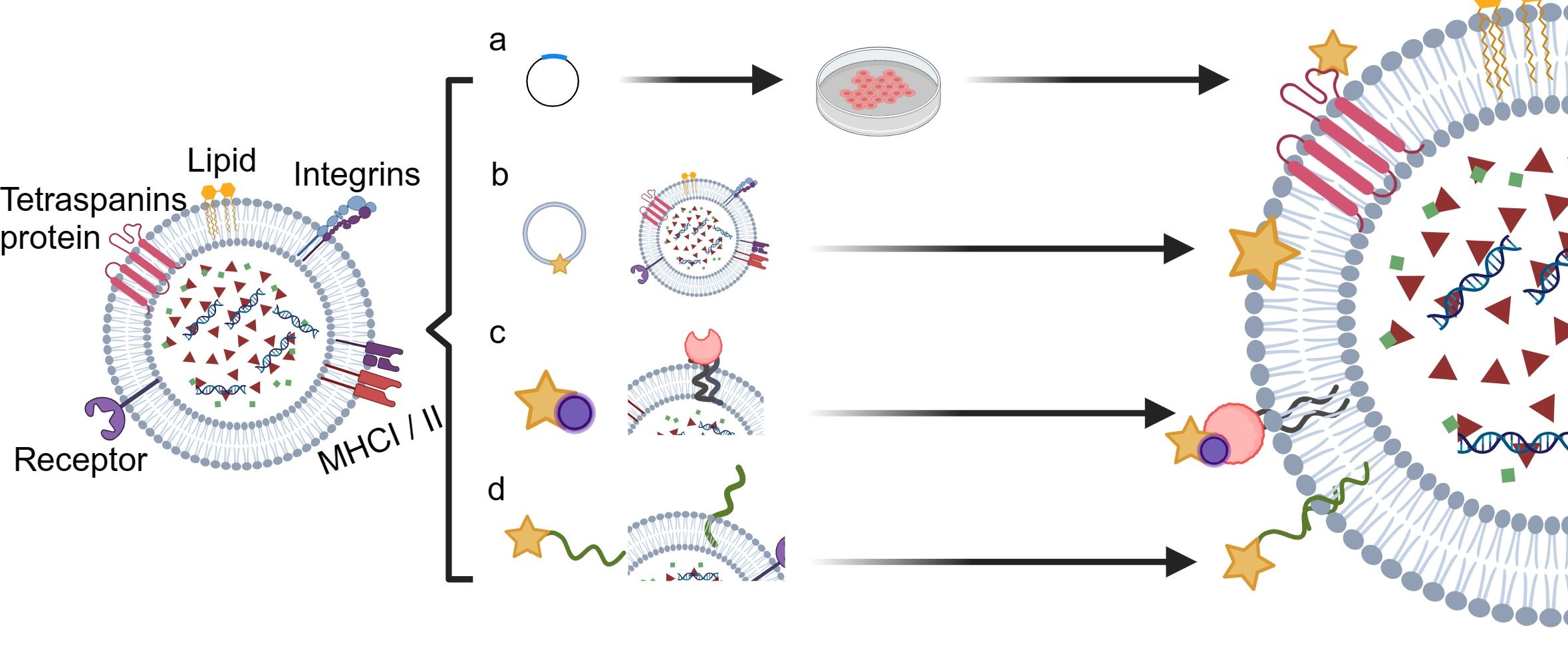App1-Expressed Exosome Modification Service
App1-Expressed Exosome Modification Service aims to enhance the in vivo stability and drug delivery efficiency of exosomes by modifying their membrane surface with antiphagocytic protein 1 (App1). This service is applicable in research involving drug delivery, protein transport, targeted therapy, and barrier-crossing delivery.
Exosomes, as natural nanoscale vesicles, are widely used in drug delivery, immunotherapy, and tissue repair due to their excellent biocompatibility, tissue-penetrating capability, and low immunogenicity. However, engineered exosomes are still exogenous to the host, and a significant portion may be cleared by the immune system during systemic administration—macrophages play a central role in this clearance process. To prolong the circulation time of exosomes in vivo and improve their targeted delivery efficiency, researchers have begun exploring membrane surface modifications that can endow exosomes with “immune evasion” capabilities.
App1 is a protein secreted by Cryptococcus neoformans that interacts with complement receptor 3 (CR3) and Fc receptors on the surface of macrophages, thereby inhibiting both complement-mediated and antibody-dependent phagocytosis. This allows the pathogen to evade immune clearance. Leveraging this property, App1 can be fused to exosomal membrane proteins through molecular biology techniques to reduce immune recognition and clearance of exosomes. This modification increases the circulatory stability of exosomes and enhances their ability to cross tissue barriers for more efficient cargo delivery.
Leveraging multiple molecular biology platforms, MtoZ Biolabs provides App1-Expressed Exosome Modification Service constructing engineered exosomes with antiphagocytic capabilities by decorating their membrane with App1. This modification extends the in vivo half-life of exosomes and promotes their accumulation in target tissues, significantly improving cargo delivery efficiency. The service offers a powerful technical foundation for building more efficient and stable exosome-based delivery systems.
Analysis Workflow

Sun J. et al. Front. Immunol. 2024.
The core of the App1-Expressed Exosome Modification Service lies in the precise localization of App1 on the exosome membrane surface. Common methods include fusion protein expression and exogenous protein anchoring to the membrane. Below is the standard workflow for the fusion protein expression strategy:
1. Construction of Expression Vector
Design a fusion construct of App1 and a membrane-anchoring protein, followed by vector construction and sequence validation.
2. Cell Engineering and Expression
Perform transfection or viral infection and optimize expression conditions to ensure efficient secretion of exosomes.
3. Exosome Isolation and Purification
Use ultracentrifugation, size exclusion chromatography (SEC), or other methods to extract high-purity exosomes.
4. Verification of App1 Surface Modification
Detect App1 expression on the exosomal membrane using Western blot and flow cytometry.
Perform TEM and NTA analyses to confirm exosome morphology and size distribution.
Applications
Enhanced In Vivo Stability and Circulation Time
Suppress phagocytosis by the mononuclear phagocyte system to improve delivery efficiency and tissue accumulation.
Improved Delivery of Therapeutics or Nucleic Acids
Suitable for delivering a variety of cargos such as siRNA, miRNA, mRNA, small molecule drugs, and proteins.
Development of Delivery Vehicles for High-Immunity Microenvironments
Applicable in tumors, inflammatory conditions, and autoimmune diseases characterized by high phagocytic activity.
Facilitated Barrier Penetration
Enhances delivery to hard-to-reach tissues such as the brain and deep immune sites.
FAQ
Q. What methods can be used to detect App1 expression on exosomes?
Common techniques for verifying App1 expression on exosomes include:
Western blot: Detect the fusion protein expression of App1 within the exosomal fraction.
Flow Cytometry (Exo-FACS): Analyze App1-positive exosome populations using membrane dye labeling.
Immunogold-TEM: Directly visualize the membrane-localized expression of App1 on exosomes, confirming its orientation.
These methods collectively ensure the verification of App1 expression level, localization consistency, and surface exposure, supporting its intended immune-evasive functionality.
Q. Can cargo molecules (e.g., siRNA, proteins, small molecules) be co-loaded with App1-modified exosomes?
Yes. App1 surface modification is compatible with cargo loading. Common approaches include pre-loading in donor cells or post-loading after exosome isolation. We will design the optimal strategy based on your cargo type (e.g., miRNA, proteins, small molecule drugs) to ensure that App1 modification does not interfere with cargo encapsulation efficiency or functional activity.
How to order?







